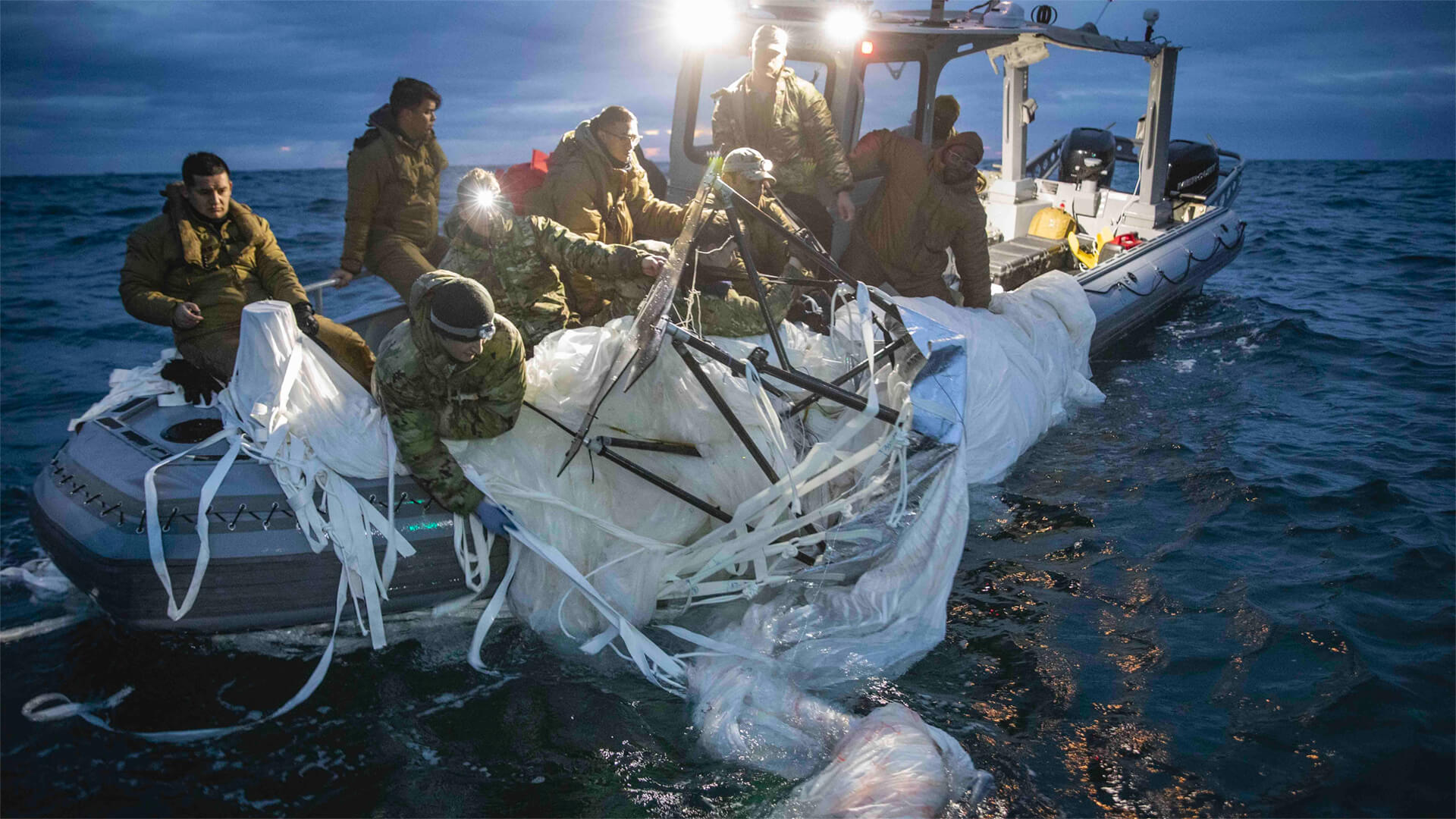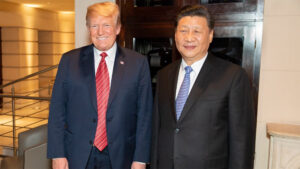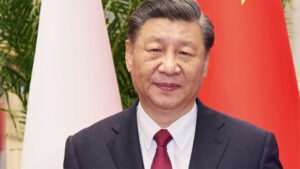Unfortunately for the Chinese, their balloon didn’t make it in time for the Macy’s Thanksgiving Day Parade…however, it’s made a much bigger splash than the rest of this year’s balloons.
Now I’m no balloon expert, but it seems to me that a “spy balloon” is a little outdated for 2023; especially when an open-source satellite could have given them the same intel.
The effect of this balloon is two-fold. First, it’s shown the world that the disconnect within the Chinese government has reached an all-time high. Second, diplomatic relations between the US and China have grown colder than ever and will likely be strained even further.
Prefer to read the transcript of the video? Click here

This Friday, Feb. 17th, join me for the webinar – Global Outlook: One Year into the Ukraine War.
We’ll dive into the global impacts the war has had on supply chains, agriculture, and much more. After my presentation we’ll have a Q&A portion to answer all those burning questions.
Here at Zeihan On Geopolitics we select a single charity to sponsor. We have two criteria:
First, we look across the world and use our skill sets to identify where the needs are most acute. Second, we look for an institution with preexisting networks for both materials gathering and aid distribution. That way we know every cent of our donation is not simply going directly to where help is needed most, but our donations serve as a force multiplier for a system already in existence. Then we give what we can.
Today, our chosen charity is a group called Medshare, which provides emergency medical services to communities in need, with a very heavy emphasis on locations facing acute crises. Medshare operates right in the thick of it. Until future notice, every cent we earn from every book we sell in every format through every retailer is going to Medshare’s Ukraine fund.
And then there’s you.
Our newsletters and videologues are not only free, they will always be free. We also will never share your contact information with anyone. All we ask is that if you find one of our releases in any way useful, that you make a donation to Medshare. Over one third of Ukraine’s pre-war population has either been forced from their homes, kidnapped and shipped to Russia, or is trying to survive in occupied lands. This is our way to help who we can. Please, join us.
CLICK HERE TO SUPPORT MEDSHARE’S UKRAINE FUND
CLICK HERE TO SUPPORT MEDSHARE’S EFFORTS GLOBALLY
TRANSCIPT
Hey Everybody. Peter Zeihan coming to you from another exciting hotel room today. Today’s Balloon Day. Now, I realize it’s been quite a while since the balloon was first sighted and brought down. But, you know, part of being a generalist is knowing when to keep your mouth shut because you don’t want to just talk about things you don’t know much about. And balloons have never made my top, you know, thousand list of things I consider myself a semi expert in. So I had to go out and speak to a few people.
Let’s start with what the Chinese were technically trying to do. They were doing overflight of a lot of our military bases, specifically our ICBM launch facilities, because the Chinese are new to having a nuclear deterrent and the idea of having reinforced bunkers and silos. And so everything from the type of fuel – solid versus liquid to the type of reinforcements to the type of launch to capabilities to the staging of the rockets. They’re all relatively new to all of this, certainly to doing it at scale. Remember that as early as the 1970s, the United States had over 30,000 nuclear weapons, about one third of which would have been deployed by missile. Now, with arms control treaties and the post-Cold War environment, we have slimmed that down to just a few hundred. But the United States has a deep bench of experience in building and maintaining these things, and the Chinese simply don’t. Until very recently, their entire deterrent was just about 100 or so missiles. And they’re trying to beef it up. Part of the general effort to get into great power competition, and they have a very long way to go. So any little peek that they can get would be great from their point of view. Obviously, from the American point of view, we have a slightly different view of that.
Now, when it first came out, like, a lot of people didn’t really know what was going on. And so my first thought was like, you know, why would the Chinese, I mean, the balloons are big, they’re slow moving. You can’t maneuver them very well. They’re obvious. And so it’s like, you know, I haven’t thought very much of the leadership of Xi Jinping of late or making mistakes in energy and agriculture and finance and economic development and trade. I mean, manufacturing, you name it. We’re seeing catastrophic failures across the Chinese system in decision making because Xi has basically gotten rid of anyone who might tell him no or might tell him yes…but. He’s surrounded himself with yes men. And so we’re just seeing a general breakdown of the bureaucracy and the decision making apparatus. But even with that in mind, it was like, you know, Xi isn’t just stupid. Why would he throw a surveillance platform that would just gently float across the United States? Want to be obvious. It would be seen that obviously would torpedo relations. I just never occurred to me that they could be that dumb. Well, turns out the rampant stupidity that is taking over decision making and Chinese policy has now reached a bit of a break point.
We now know from the responses to the crisis that the Chinese have lost the ability to coordinate within their own system. So normally if you can do something that’s a little provocative, you’re going to coordinate with your diplomatic personnel and your executives in order that nothing else that you’re working on gets ruined. But the day that the balloon, like, floated into northern Idaho, Blinken was supposed to be on a plane going to China, and he had to cancel.
And then over the course of the next week, the Americans were reaching out to the Chinese, and the Chinese refused to take the call because they didn’t know what to say because they couldn’t get direction. And then once it was shot down over the waters of South Carolina, they refused to pick up the phone because they said, oh, no, you don’t understand.
You’re using military force, take out a civilian aircraft. I mean, the just the abject refusal to deal with the situation is the only you only see that when the bureaucracy is seized up, she has so intimidated and purged the bureaucracy that there’s really only two types of people left, those who will do nothing unless they are explicitly instructed to do something, or those who are true believers, the zealots, and those are the folks who will go out on the runways and sterilize them for COVID, or apparently will try to get a balloon over the United States, not even thinking that it might have a problem for relations, which U.S. Chinese relations are the coldest they
have ever been. And with incidents like this, any effort to warm them is not working. So that’s kind of the diplomatic and the political side. This is this is really bad for China and really exposes just a big, hollow emptiness in their policymaking capacity, which I’m sure no one’s going to take advantage of at all. So let’s talk about what the Chinese might have gotten and what the United States might have lost or gotten, because there’s a clear winner here and it’s not probably who you think it is now, the missile silos that the Chinese are so interested in, you know, news flash, you don’t leave those open to the elements.
And so once it was obvious that a balloon was going over them, they just button up, they get their emissions under control. And all the doors are closed. So there was nothing that the balloons could gather that could not also be gathered by satellite. So they basically floated all over the United States and got nothing better than typical open source information.
The whole time U.S. Hardware was tracking that balloon, tracking its emissions, taking digital renderings of the entirety of the structure and. Oh, yeah, yeah. Just just so we’re clear, this was not a weather balloon. This thing was 300 feet wide. That’s a big ass balloon. That’s like an order of magnitude bigger than weather balloons. And I don’t know if you guys know what an embassy airplane is, though.
Those little Barbie dream jets that sometimes you’re on a connecting flight for, they only take about 70, 80 people. The equipment that was hanging from the bottom of the balloon, the payload was bigger than an embassy air and there were long range antennas and listening devices and computing capacity and solar panels on this thing, along with some propellers.
So, you know, the idea that this was a weather balloon was like only if it was planning on monitoring the weather on Venus because it had that sort of range. So the Chinese position, again, and the diplomatic system seized up because the truth was so obvious. But the Chinese diplomatic corps had no idea that this was going on.
It’s part of that whole disconnect anyway. They got very little, if any, information from this effort. But the whole time the Americans were trapped in what was a fairly sophisticated spy platform, and then we shot it down on it over South Carolina, we started fishing for the parts. Now, I like a lot of people, apparently like President Biden, my first instinct was to shoot it down the second across the border.
But as it was explained to me, if you shoot down something of that size, when it’s ten miles up, the debris field is going to cover a couple of square miles in a line. That’s something like six or seven miles long who nobody wants. £200 of Chinese spyware falling through the roof. You people probably would have died even over like the vast empties of Montana.
So they waited for it to be over water. Also, they did detect it when it was over Alaska. But if they had shot it down over Alaskan waters, some of those waters are three miles deep and they wanted to recover it. So the waters over or off the shelf of South Carolina are 30 to 60 feet deep, something you can just do as a commercial dove.
So pieces that are being recovered and we’re getting a better look at spy equipment out of China and their capabilities and their emissions and how they handle information and what they’re looking for as a result of this incident. Then normally you would have gotten after a one or two year probing effort with using more traditional methods. So it’s kind of like the Chinese flew a canary into our cage and we just quietly locked the door behind it.
And this is turning into the intelligence bonanza of the decade. So that’s what happened after a couple of weeks of me poking into this. It’s a really intriguing story. But the bottom line is just the sheer level of stupidity and dysfunction of the Chinese national security experts, if that’s the right word, really has reached a foreign, mentally new low.
And, you know, Congress is going to be stirred up like a band of hornets. And I have no problem with that because this is going to have consequences for the relationship. There’s no way there’s nothing out of this that the Chinese are walking out of smelling. Good. All right. That’s it for me. I’ll see you guys next time.








